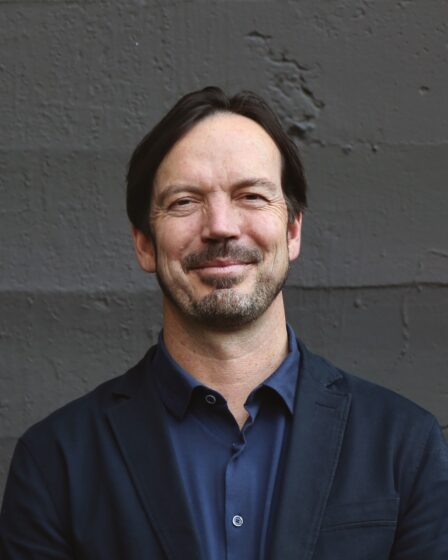Thomas Robinson: LEVER / Regenerative Timber | Technology for a Sustainable Tomorrow Lecture
Join us for this lecture by Thomas Robinson (BA Arch 1991), founder of LEVER Architecture, part of the College of Environmental Design series Technology for a Sustainable Tomorrow. He provides an overview of the firm’s work and research focused on a regenerative approach to timber design. This work includes first-of-their-kind timber typologies, the winning entry to an international competition for the new Portland Museum of Art in Maine, and groundbreaking research into seismically resilient high-rise timber structures.

About the Speaker

Thomas Robinson (BA Architecture 1991) is the founder of LEVER Architecture, a research-based design practice with offices in Portland, Oregon and Los Angeles. LEVER is widely recognized for material innovation and for pioneering work with cross-laminated timber (CLT). His projects encompass first-of-their-kind timber buildings for clients such as The Nature Conservancy, Adidas, and The Portland Museum of Art. In parallel, LEVER has conducted more than $3M in grant-funded research to develop and test new timber systems, including a 10-story full -cale seismic test of a resilient timber tower at UC San Diego. Recently completed projects in Los Angeles include the new NBC Universal Campus and the Spring Street in Chinatown, one of the largest cross laminated timber and steel hybrid structures in the city.
About the series
This presentation is part of the College of Environmental Design’s interdisciplinary fall lecture series, Technology for a Sustainable Tomorrow, which explores the role of technology in shaping our landscapes and cities, past and present. Technological innovations of the past 150 years — especially “advances” in transportation, construction, and energy — powered rapid urban growth, economic expansion, and new forms of convenience but also accelerated the climate crisis, degraded our landscapes, and compromised our health and well-being. We’ve invited speakers to critically assess the compelling opportunities, as well as the potential downsides, of generative AI and other new technologies that are increasingly becoming part of our design and research practices. Can the technologies of the 21st century help repair the damage and put us on a path to a healthier, more sustainable future — can technology fix what technology broke?
If you require accommodations to fully participate in this event, please contact Boban Zarkovich at least 10 days prior to the event.